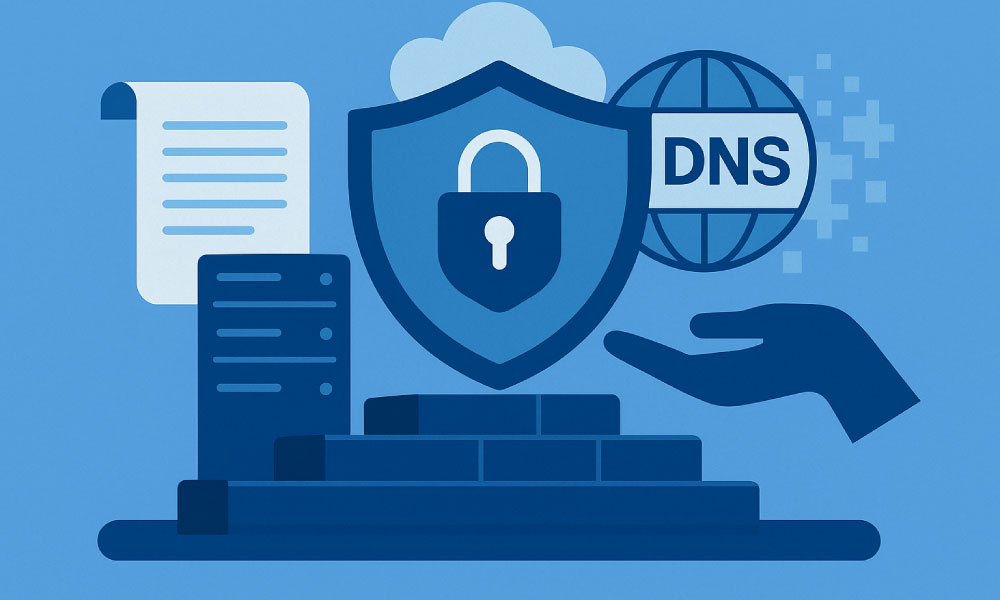Top 7 Mistakes Companies Make with Domain Security
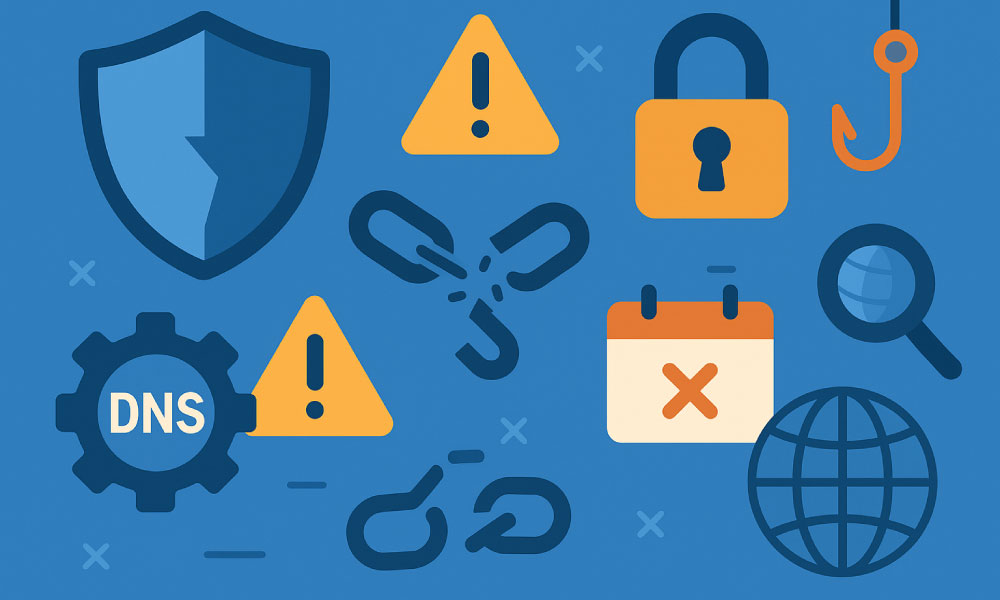
In today’s digital economy, your domain name is more than a web address — it’s the gateway to your brand, reputation, and revenue. Yet, many organizations still overlook domain security until it’s too late. From hijacking to phishing and DNS abuse, a compromised domain can lead to financial loss, customer distrust, and even total service outages.
In this article, we’ll explore the top seven mistakes companies make with domain security, why they happen, and how to fix them before they put your brand at risk.
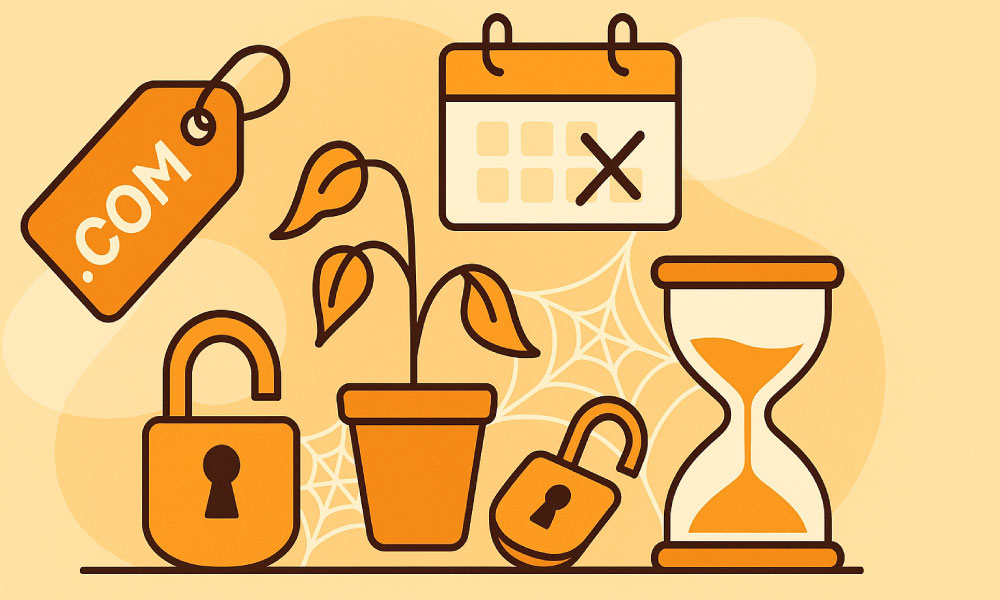
1. Treating Domains as a One-Time Purchase
The Risk: When no one is accountable, renewals get missed, access credentials get lost, and DNS settings go unchecked. This opens doors to domain expiry, hijacking, or unauthorized changes.
The Fix: Establish a domain ownership policy. Assign responsibility to a specific team, maintain updated registrar credentials, and use enterprise-grade management tools with role-based access.
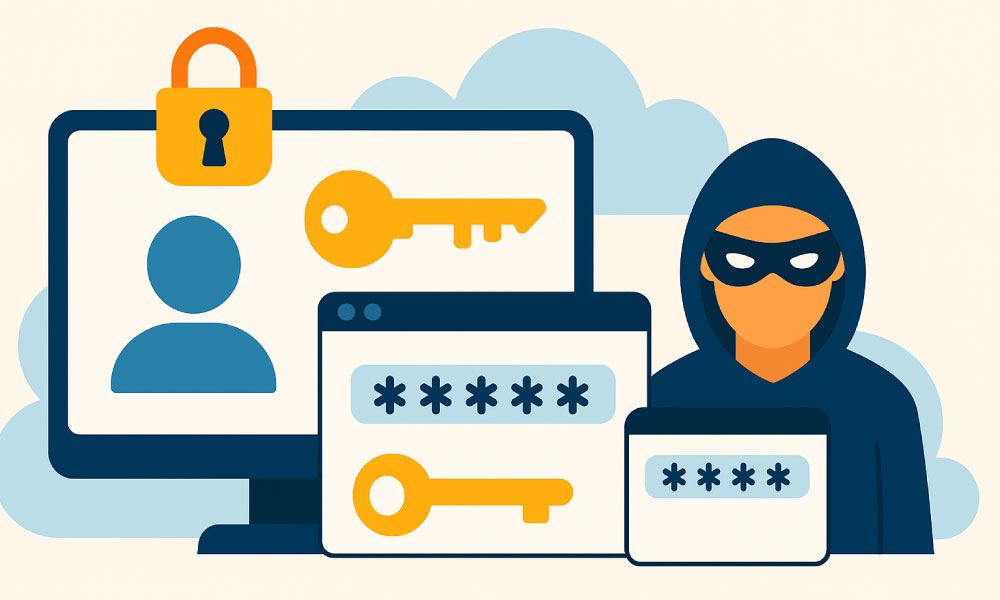
2. Relying on Weak or Shared Login Credentials
The Risk: If that password is leaked or phished, attackers gain full control of your domains, allowing them to redirect traffic, intercept emails, or issue fraudulent SSL certificates.
The Fix: Enforce strong authentication policies. Use MFA, unique user accounts, and SSO integration if possible. Never share credentials over email or chat, and audit access regularly.
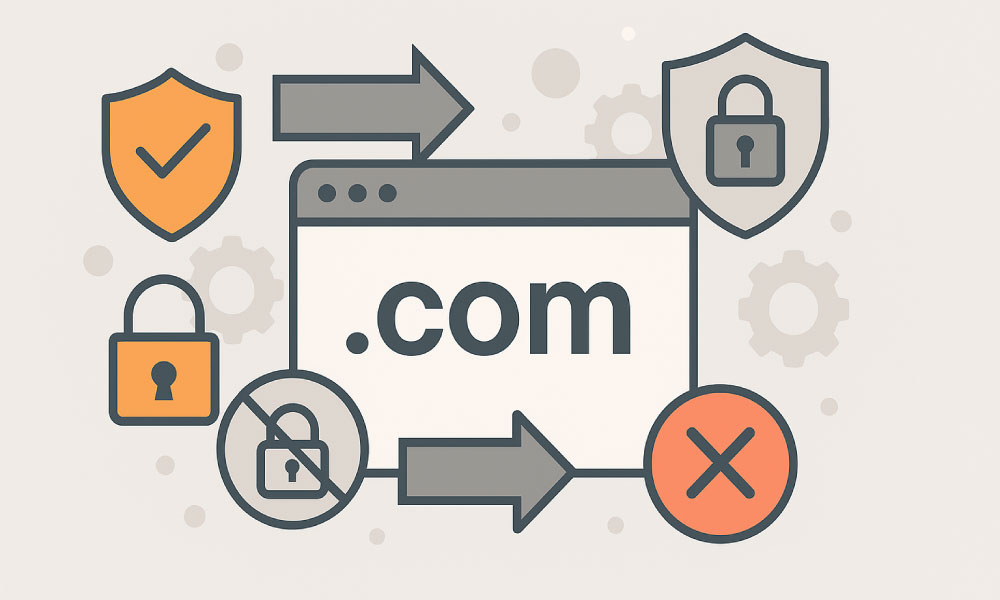
3. Ignoring Registrar-Level Security Features
The Risk: Without locks, a malicious actor or insider could transfer your domain to another registrar — effectively stealing it. Even a single phishing email or social engineering call could initiate unauthorized changes.
The Fix:
- Turn on Registrar Lock to block unauthorized transfers.
- For high-value domains, use Registry Lock (requires multi-party verification).
- Rotate and store EPP codes securely.
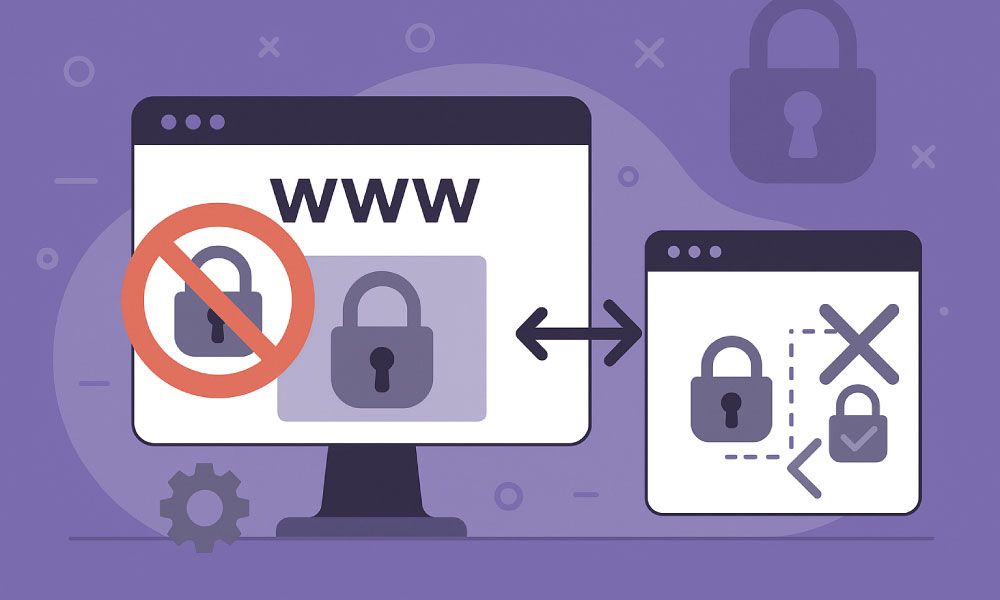
4. Forgetting to Monitor DNS Changes
The Risk: Even if your registrar account is secure, an insider or third-party vendor could alter DNS records unnoticed. This can lead to website defacement, email spoofing, or malware distribution.
The Fix: Implement DNS change monitoring and alerts. Tools like DNS monitoring services or SIEM integrations can notify you of any unauthorized updates. Always log and review DNS activity.
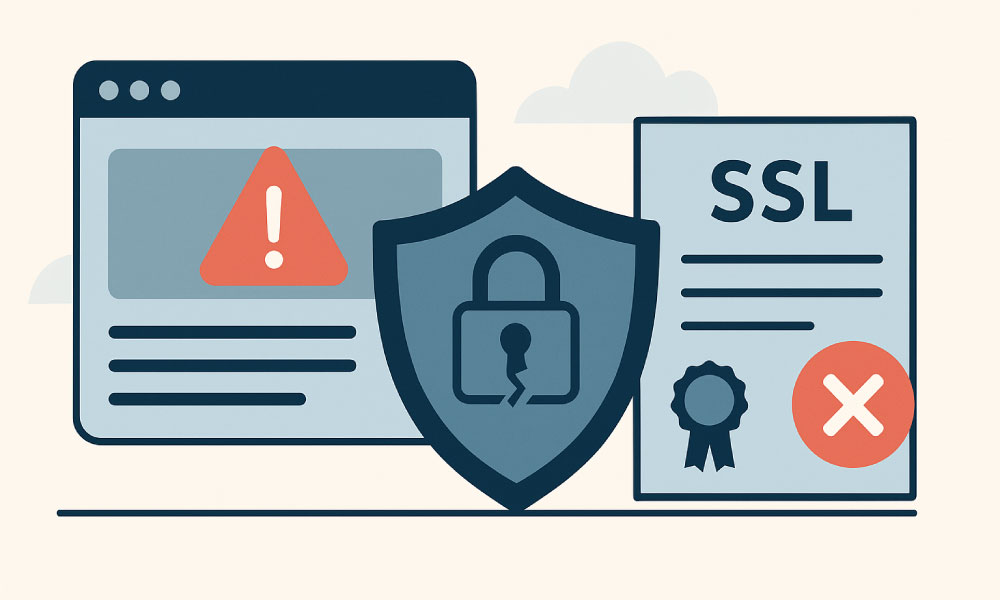
5. Overlooking SSL/TLS Mismanagement
The Risk: Expired or misconfigured certificates trigger browser warnings, break trust, and disrupt services. Attackers can exploit gaps in certificate management to perform man-in-the-middle attacks or spoof domains.
The Fix: Automate SSL/TLS management through ACME or Certificate Lifecycle Management (CLM) platforms. Enable expiry alerts and standardize certificate validation levels (DV, OV, EV) for consistent trust.
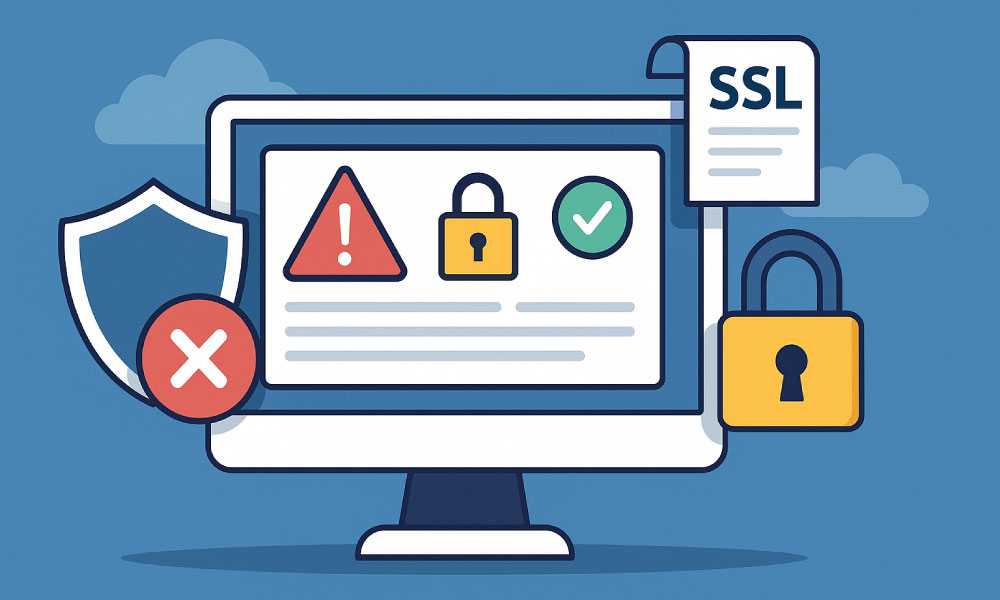
6. Neglecting Subdomains and Parked Assets
The Risk: Unused or forgotten subdomains are ripe for takeovers — where attackers claim control of an abandoned resource and host malicious content under your brand.
The Fix: Perform regular subdomain audits. Identify and remove unused records, verify ownership of third-party services (like GitHub Pages or AWS), and implement DNS hygiene practices.
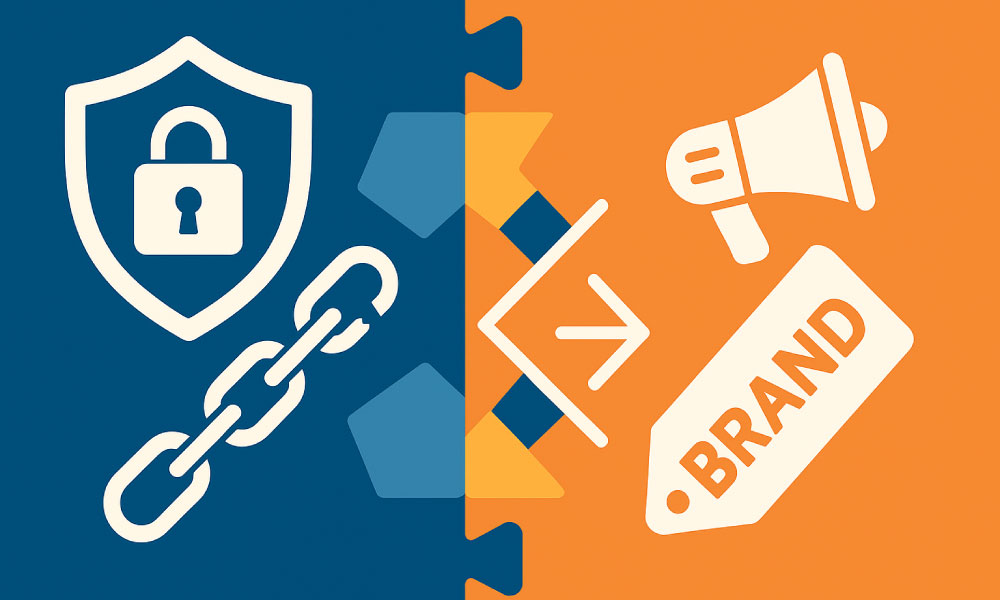
7. Failing to Align Domain Security with Brand Protection
The Risk: Cybercriminals exploit this gap by registering lookalike domains (e.g., example-secure.com), launching phishing campaigns, or selling counterfeit products.
The Fix: Combine domain security with brand protection strategies. Use monitoring tools to detect typosquatting, homograph attacks, and unauthorized use. Report and takedown fake domains promptly.
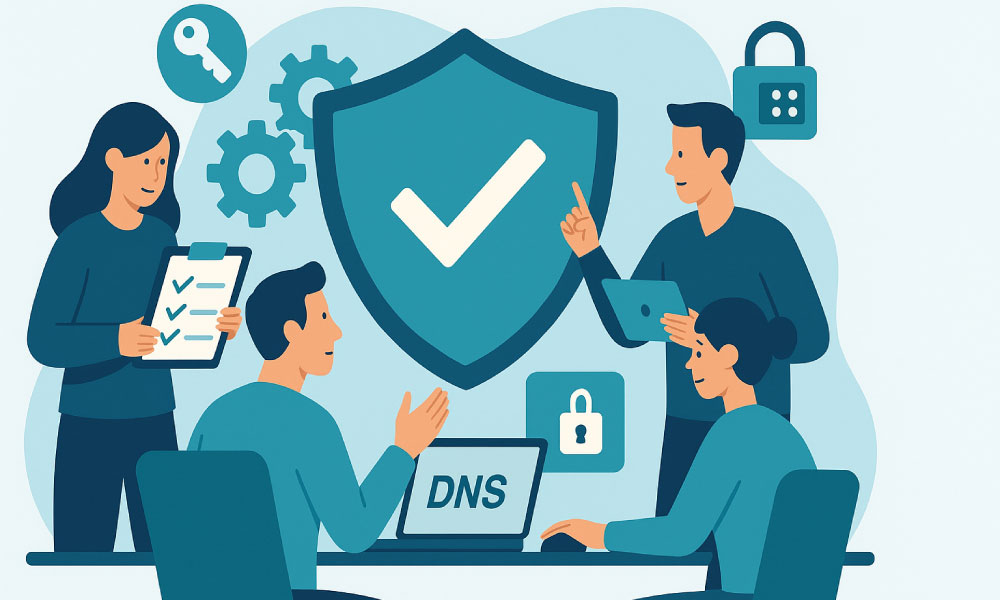
How to Build a Domain Security Culture
- Maintain a domain inventory with owner, expiry, and registrar details
- Use role-based access controls and MFA for registrar accounts
- Enable registry and registrar locks for critical domains
- Automate SSL renewals and DNS monitoring
- Audit subdomains and remove abandoned assets
- Monitor for impersonation and typosquatting
